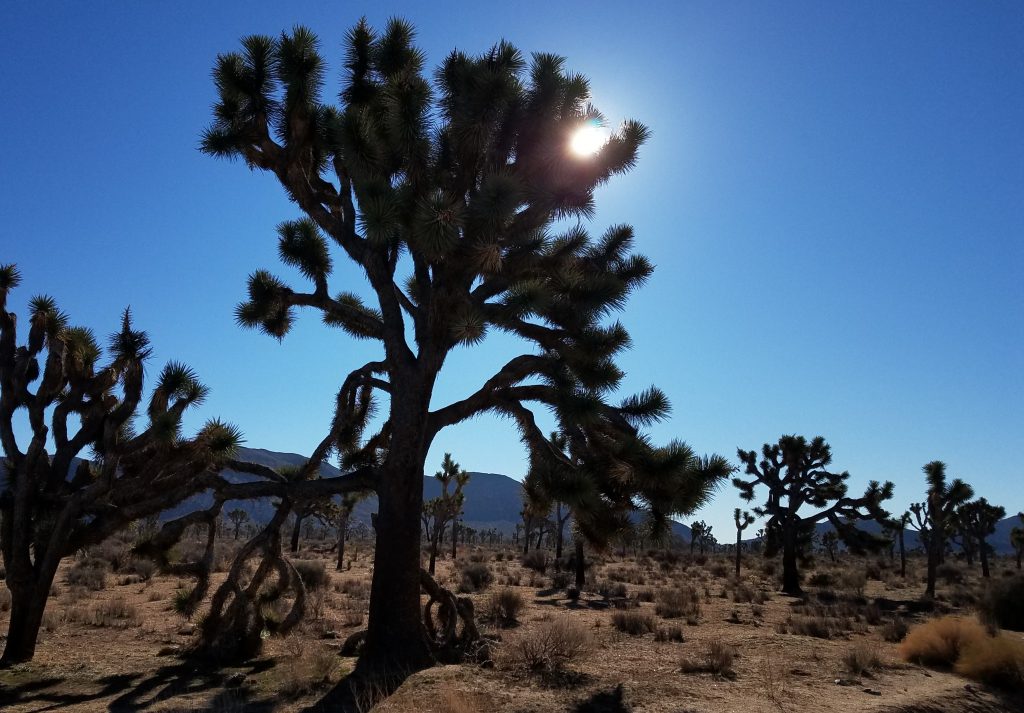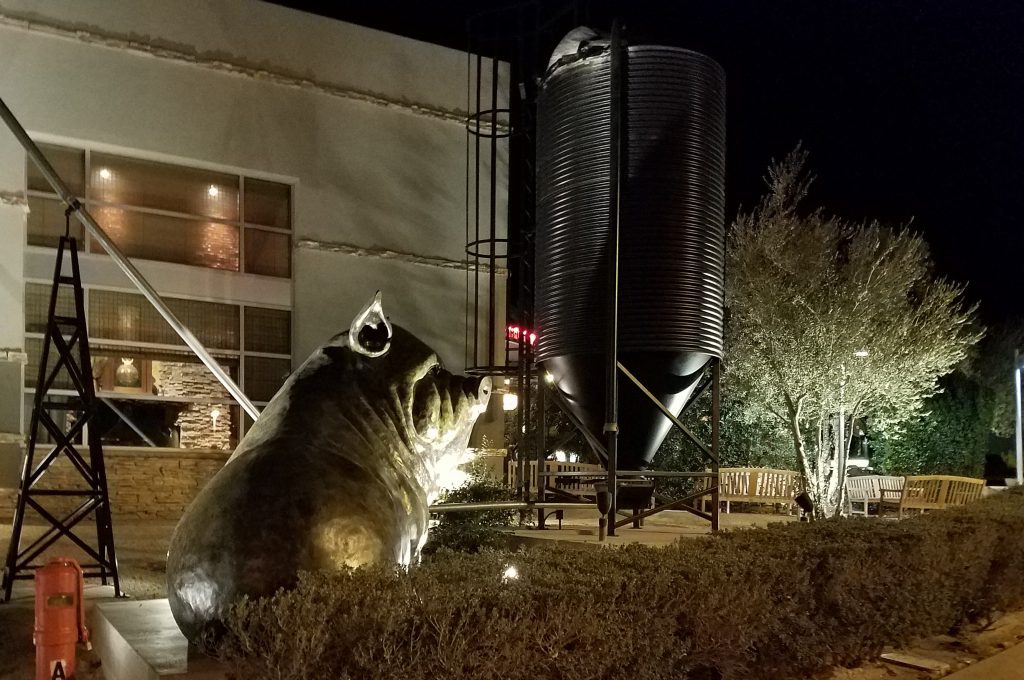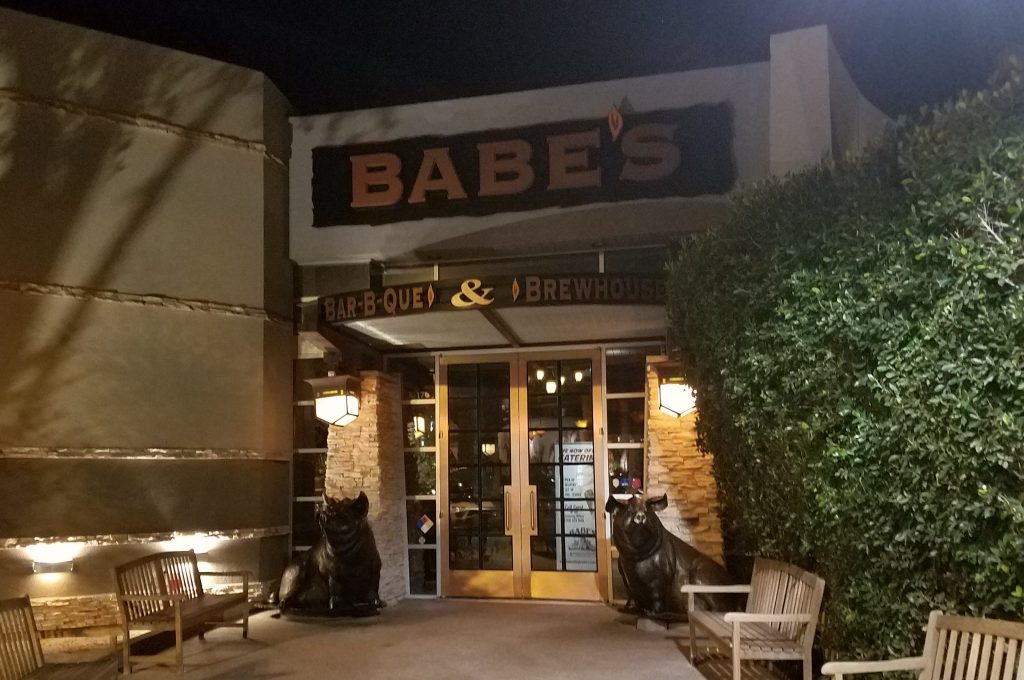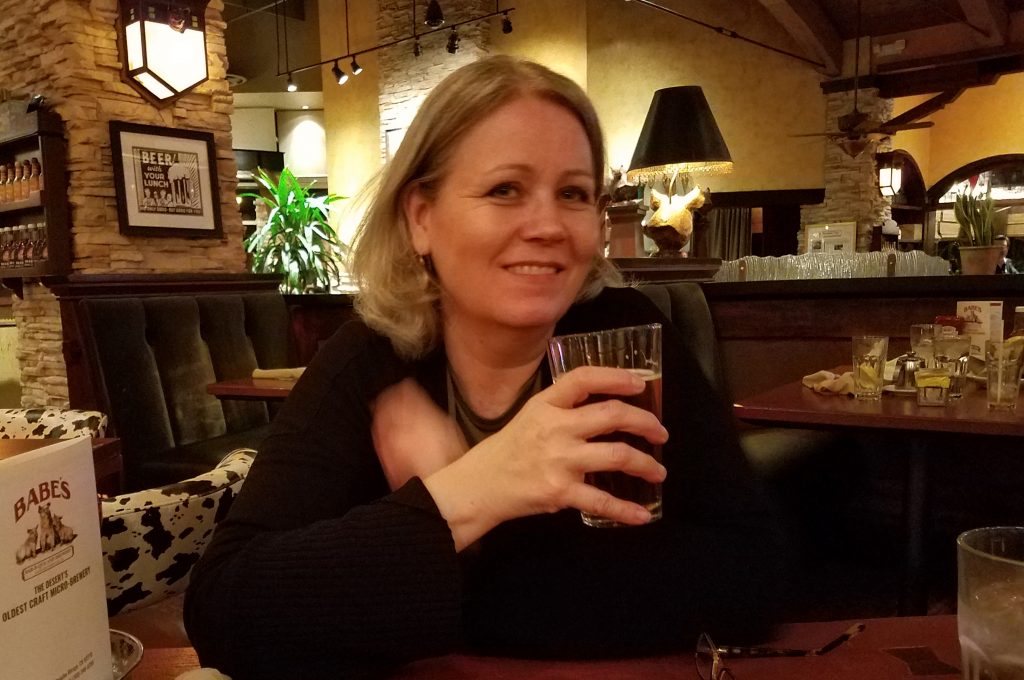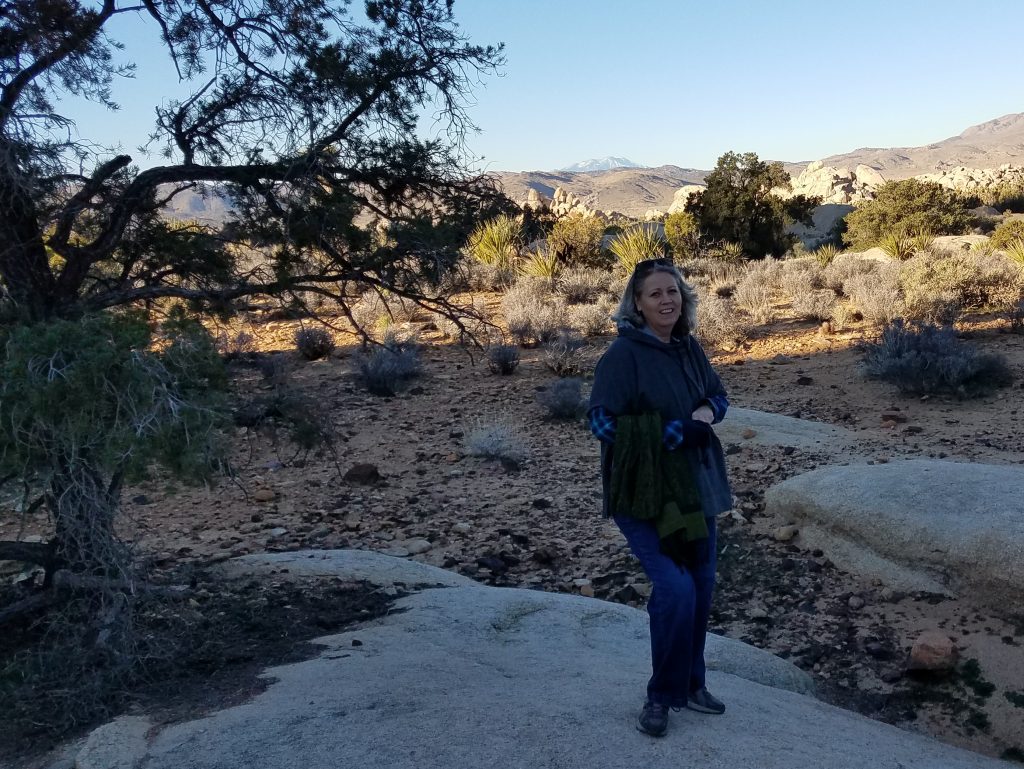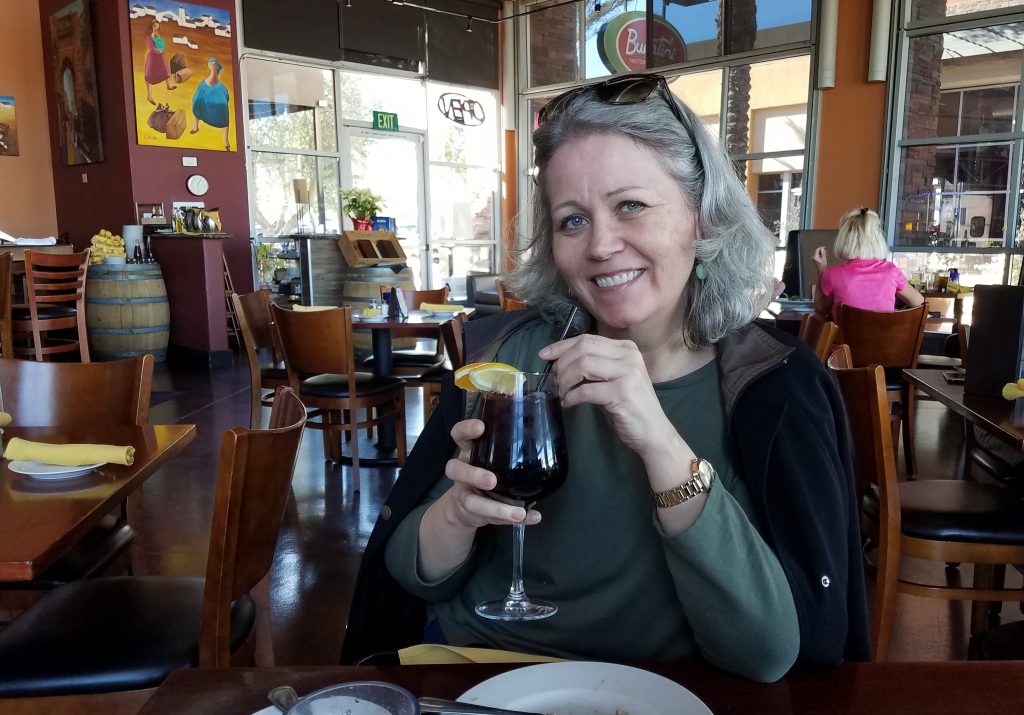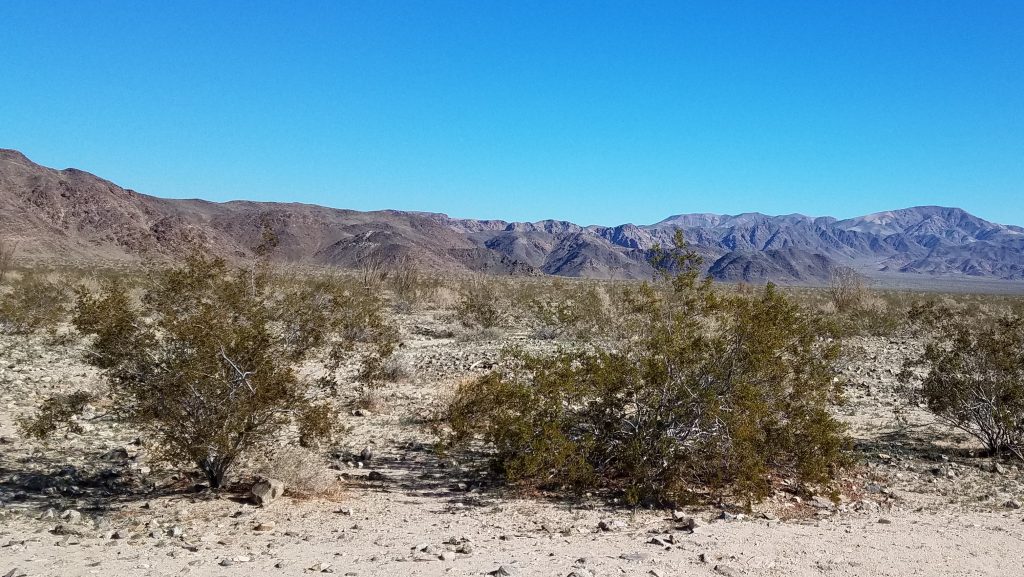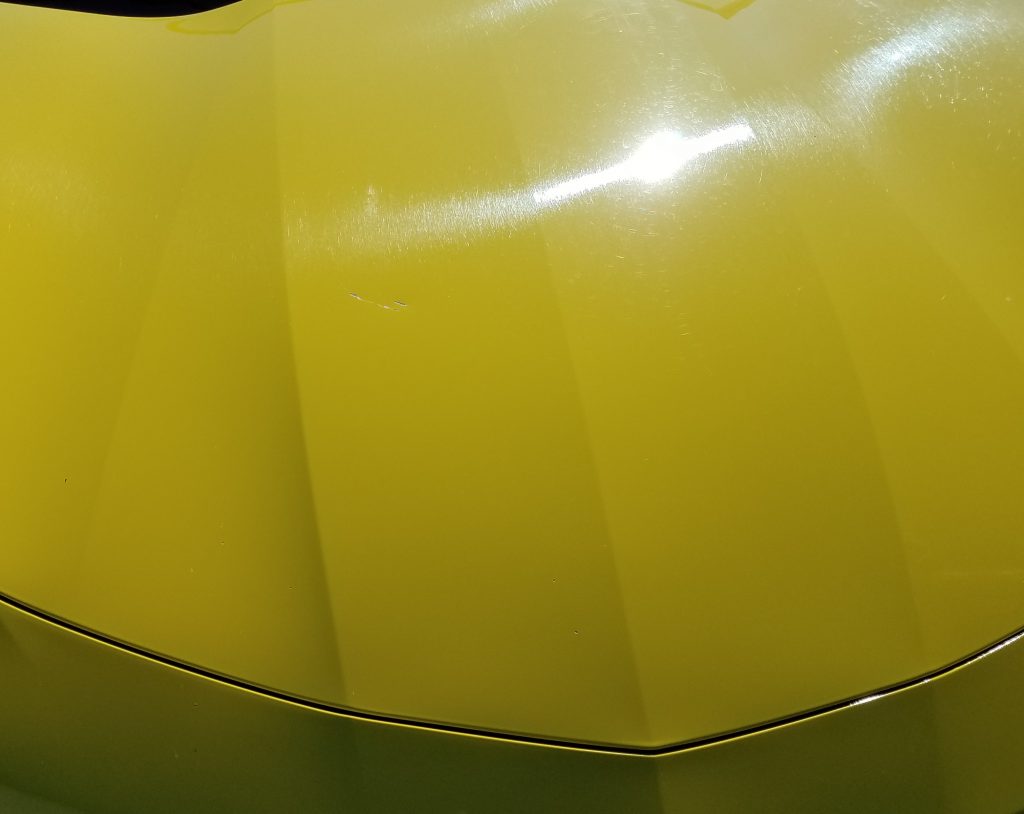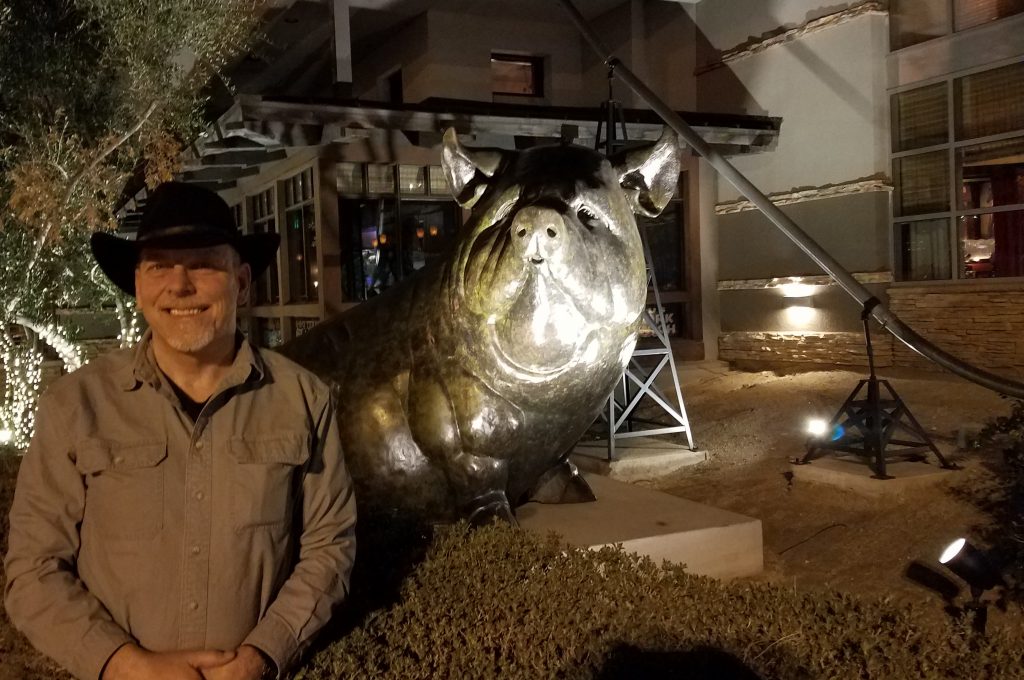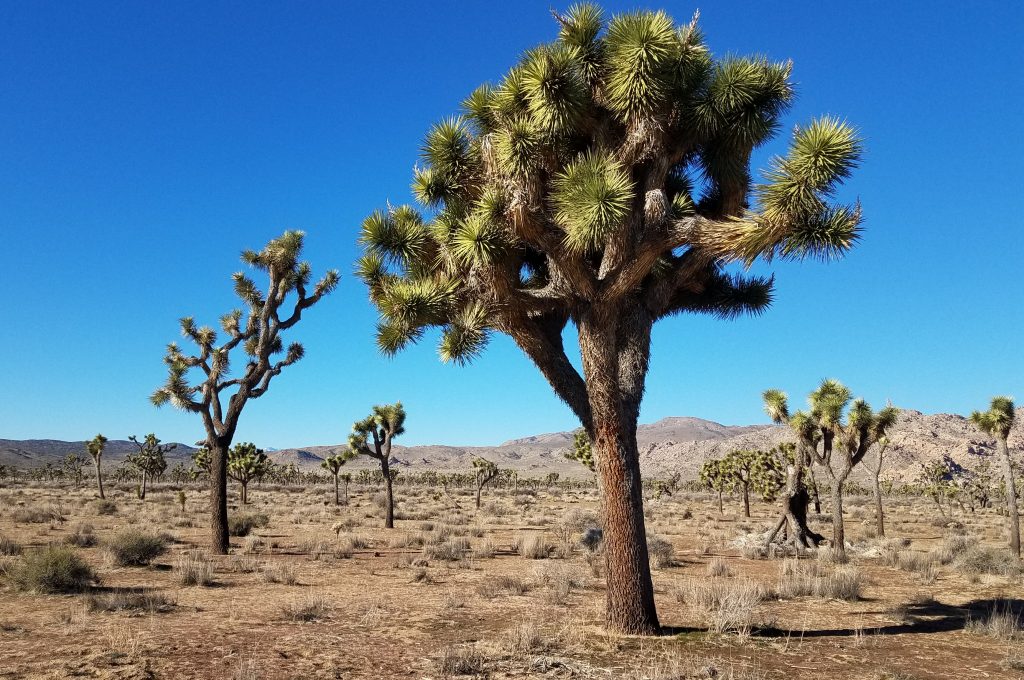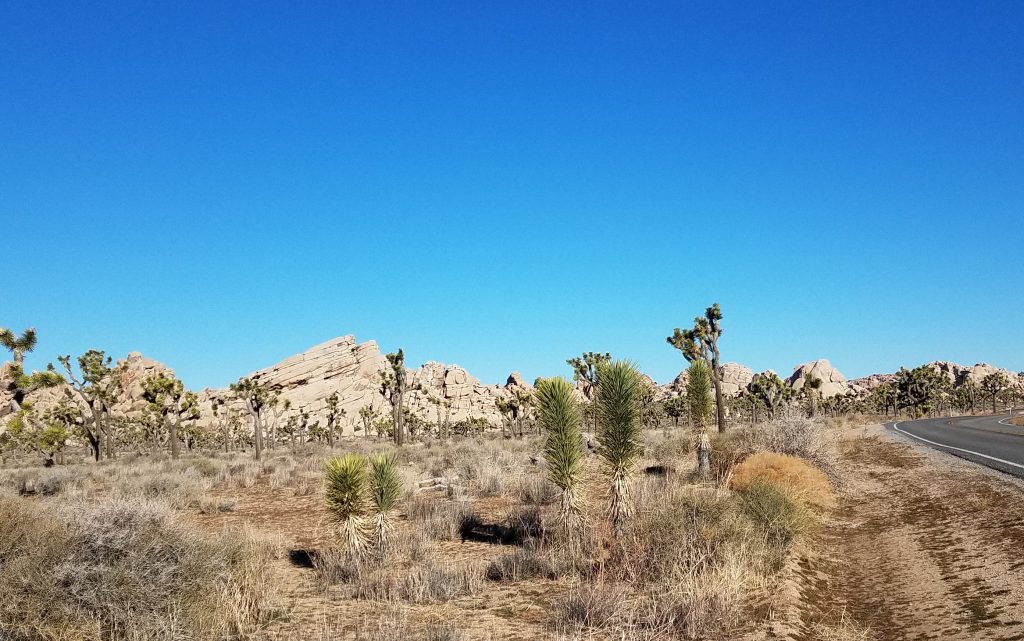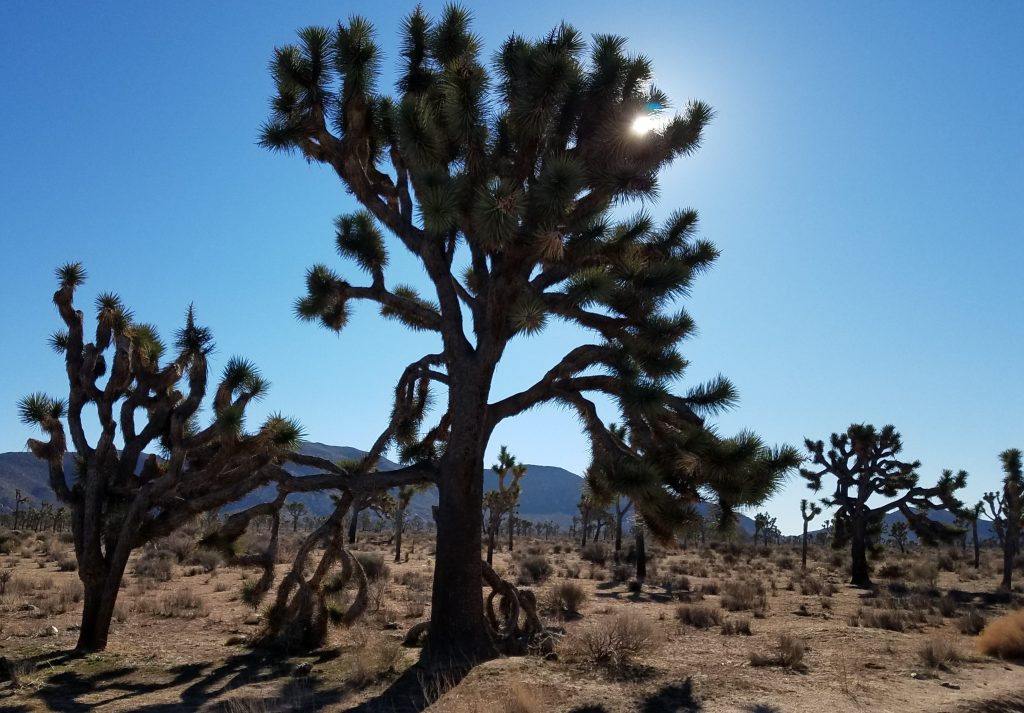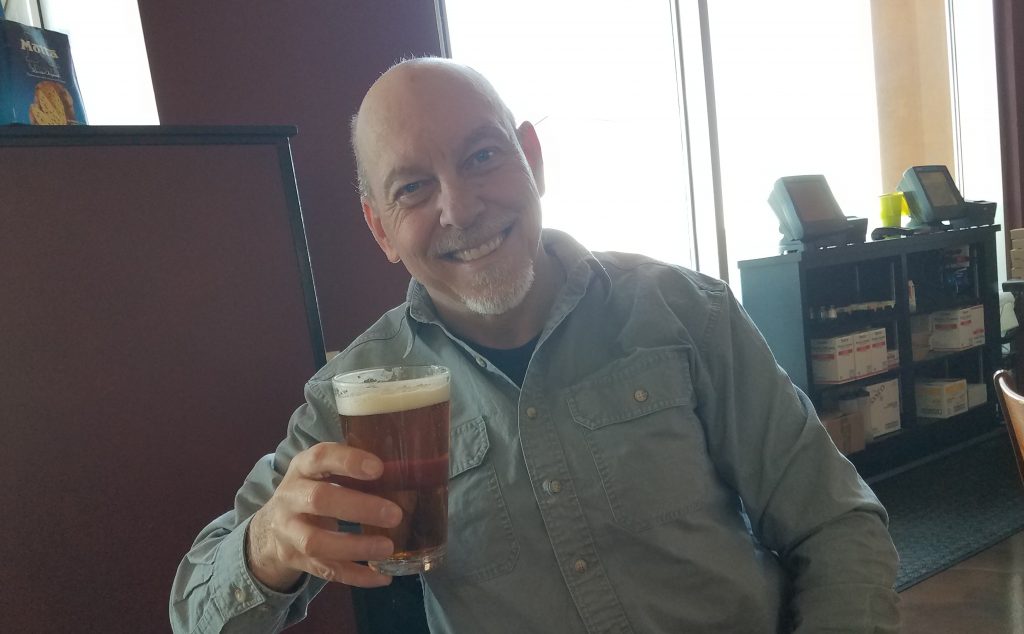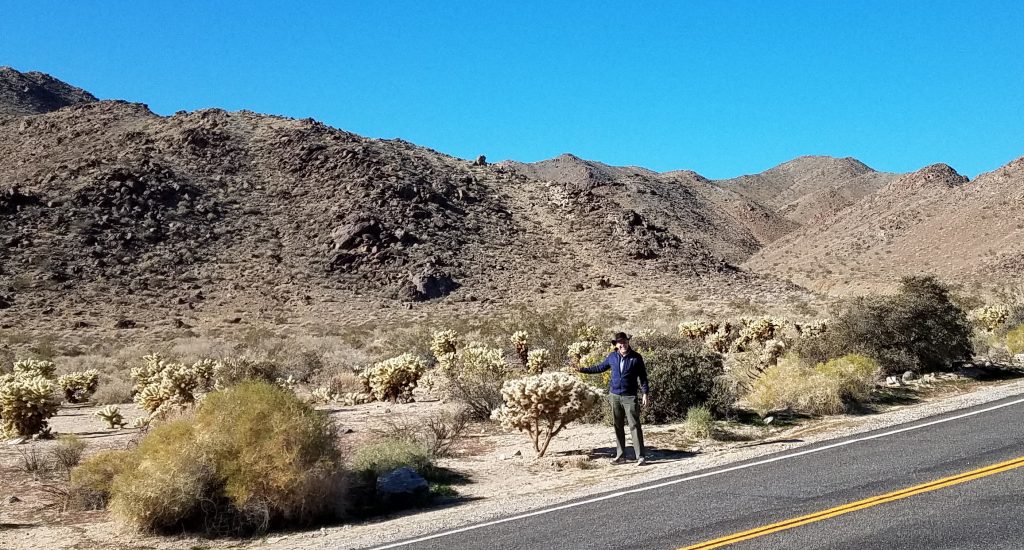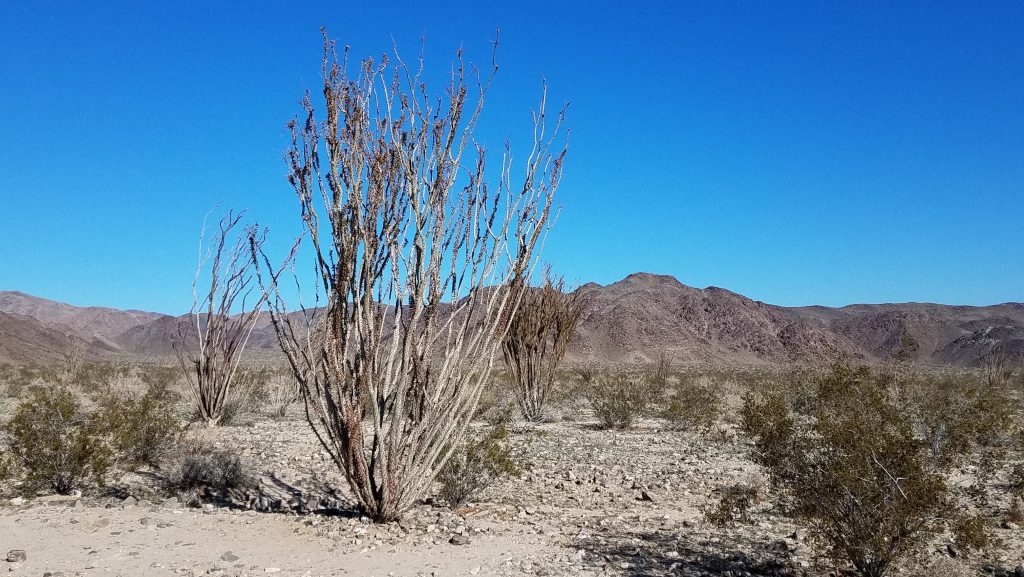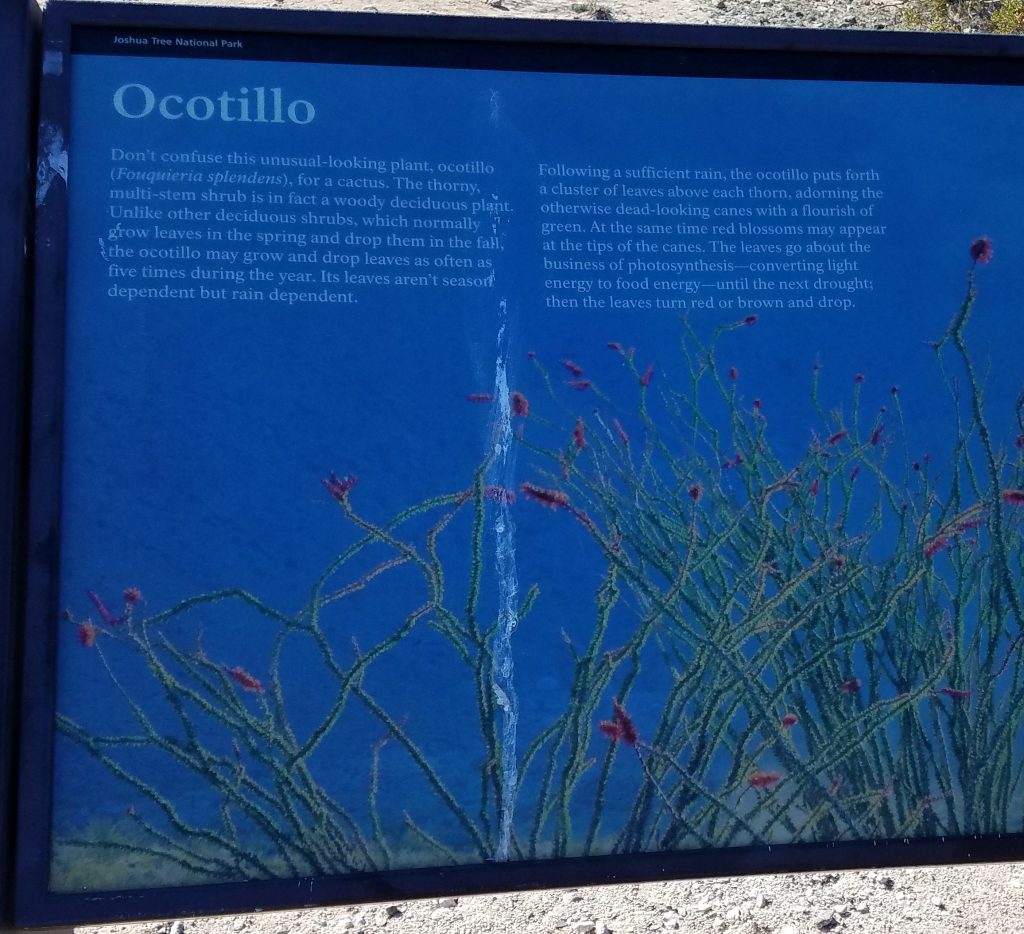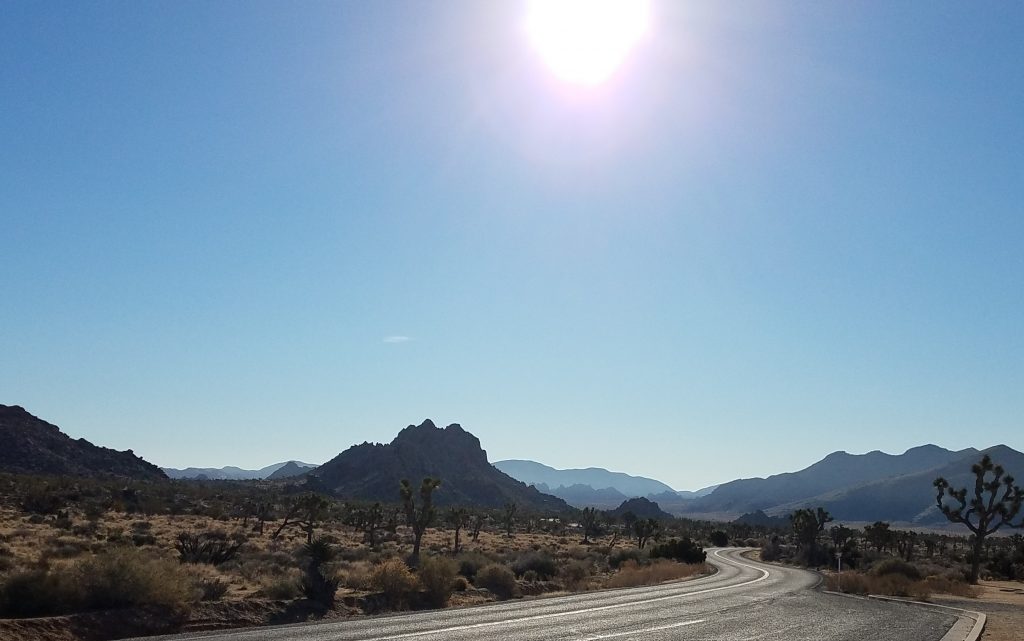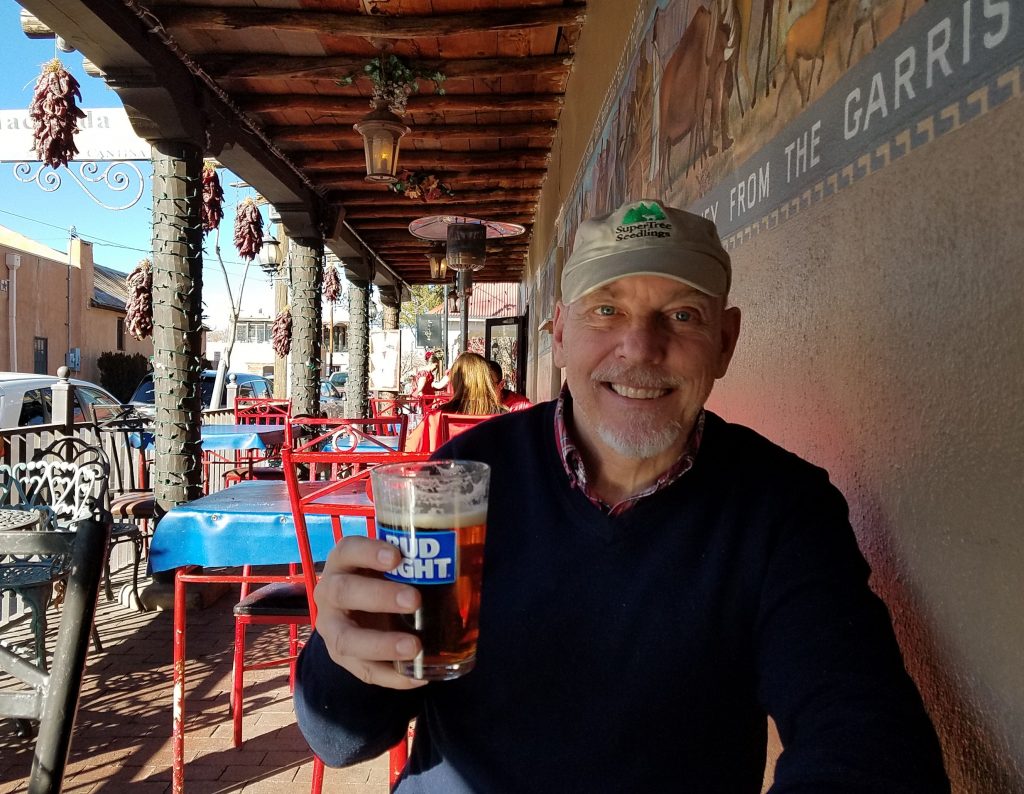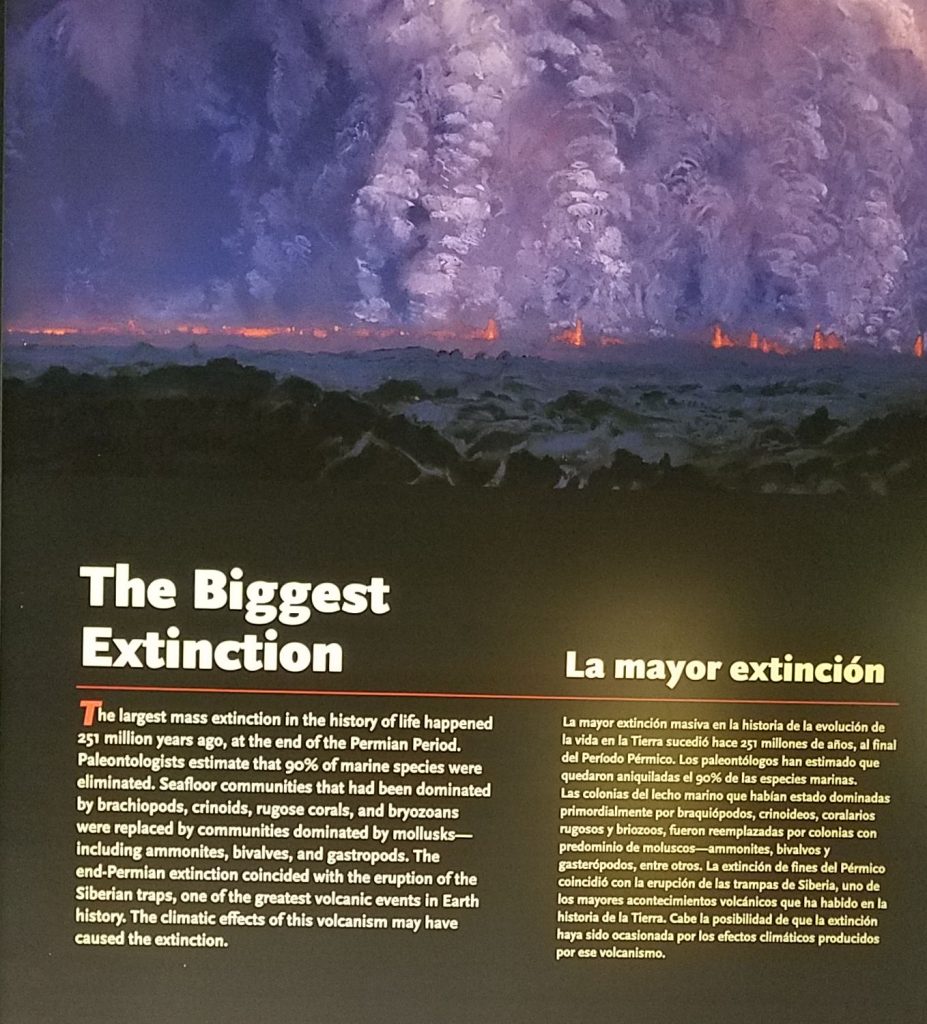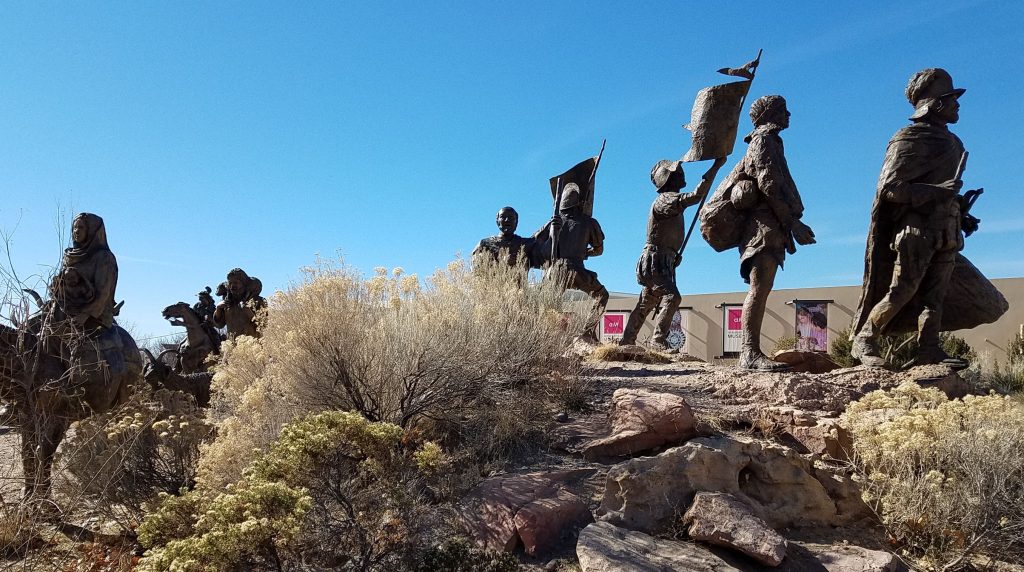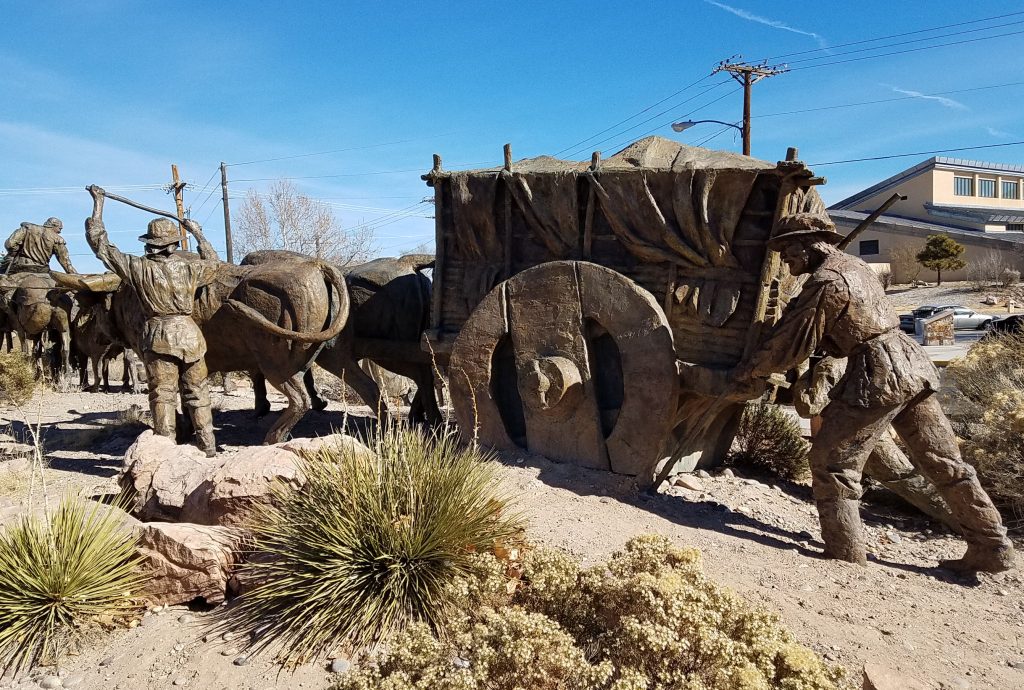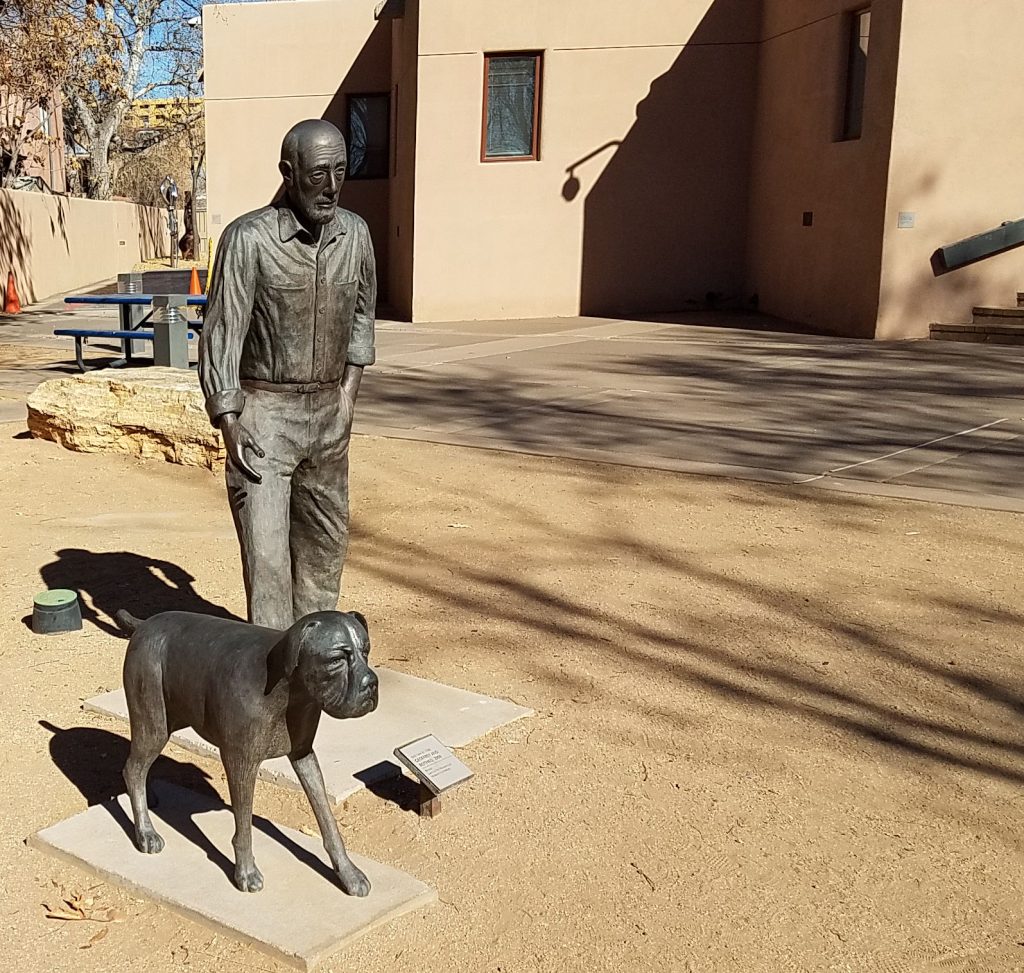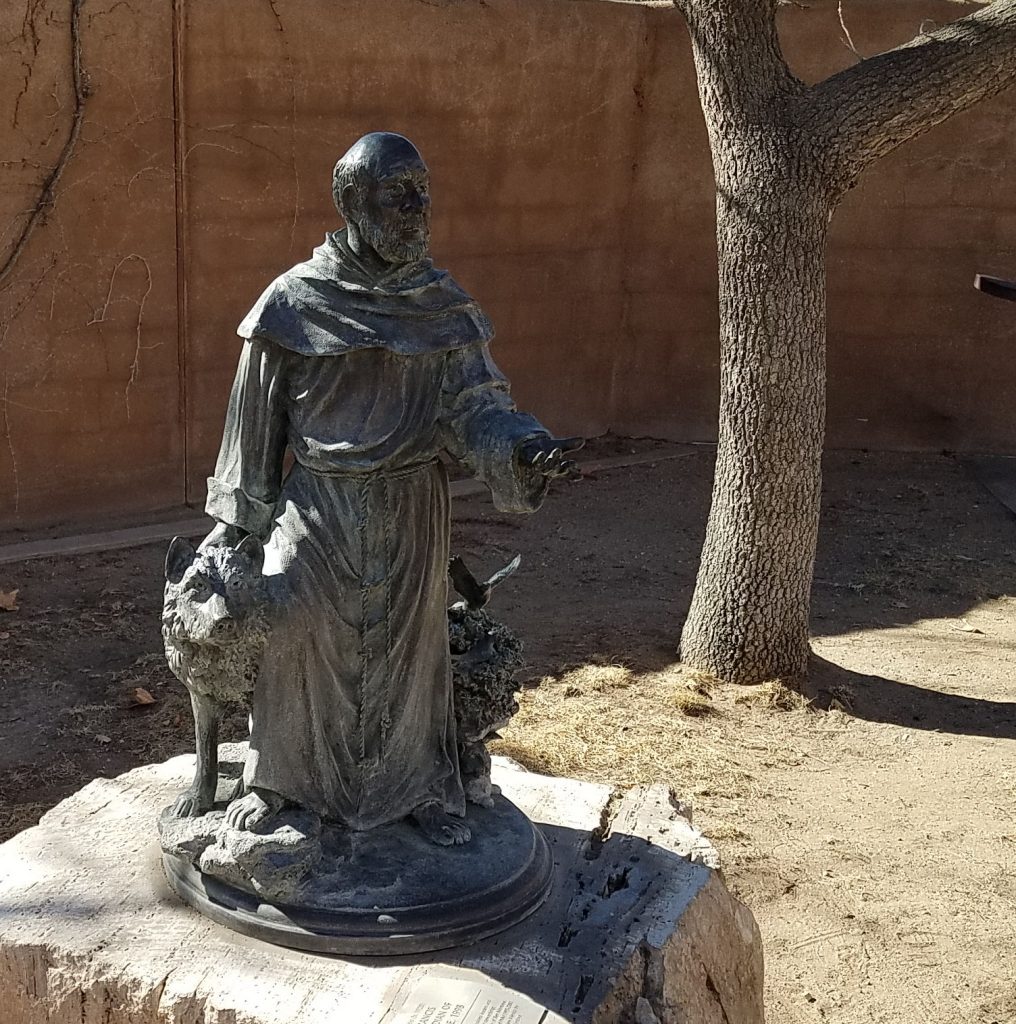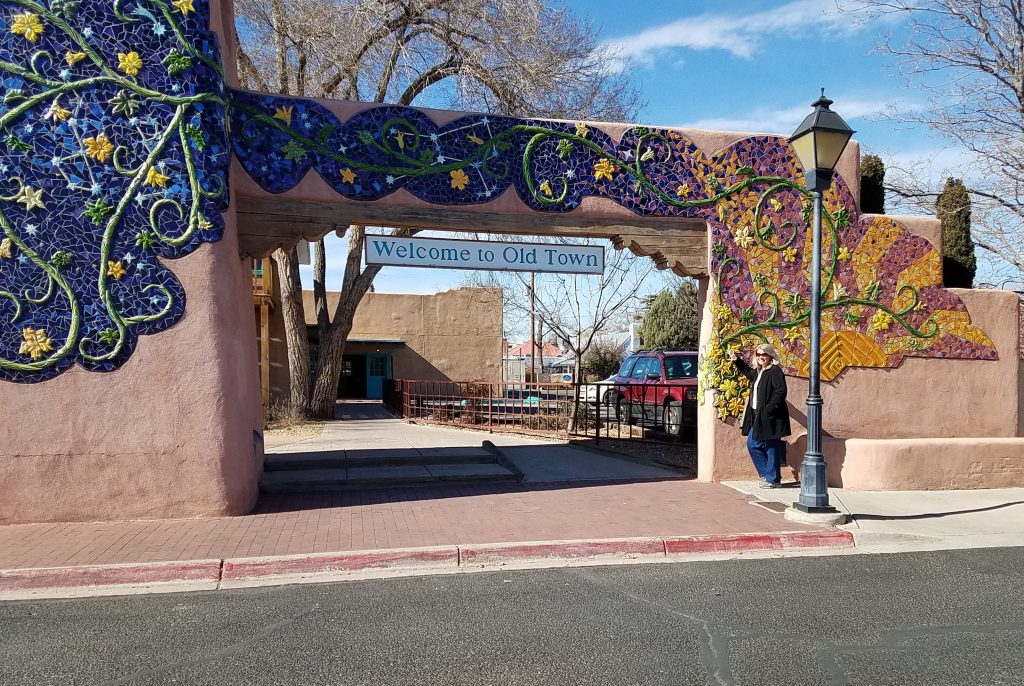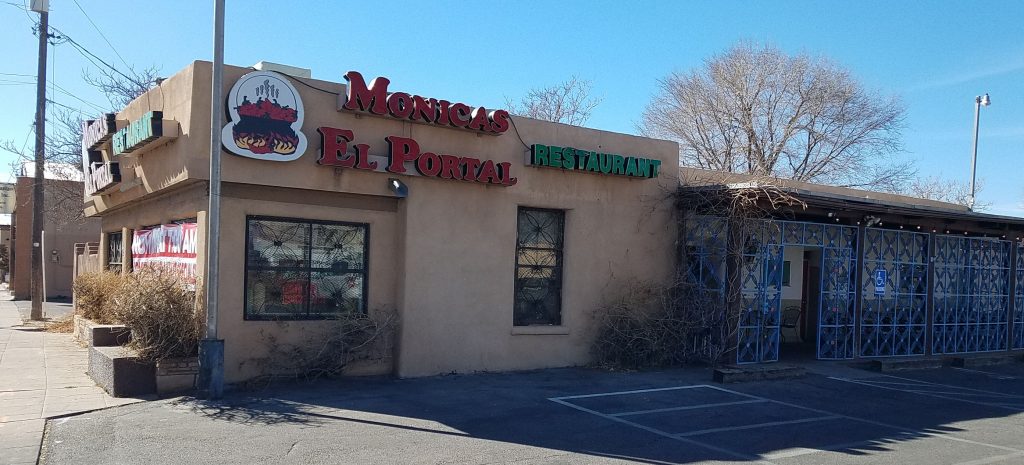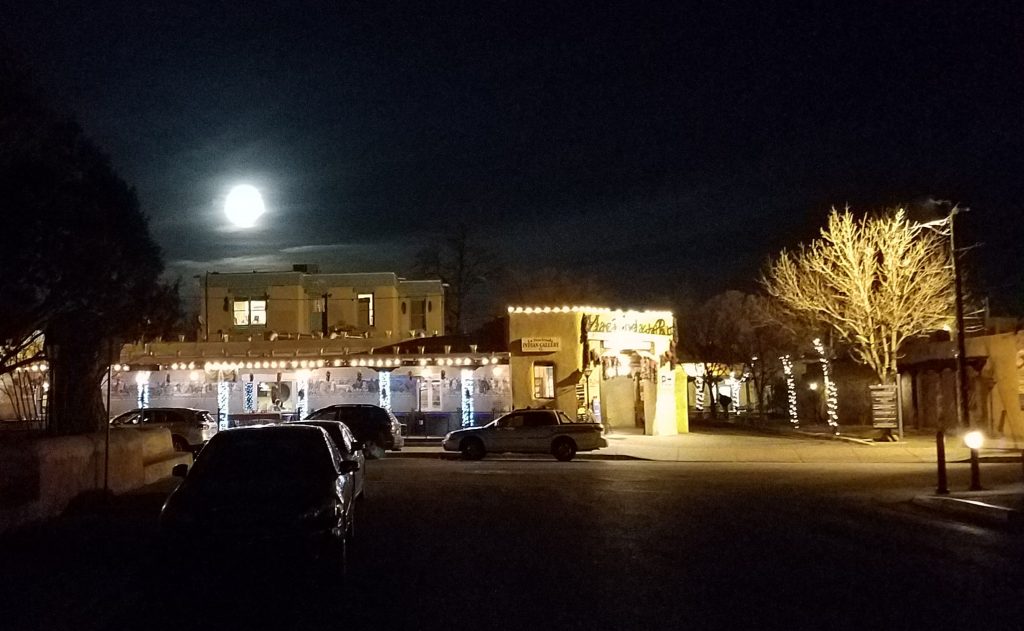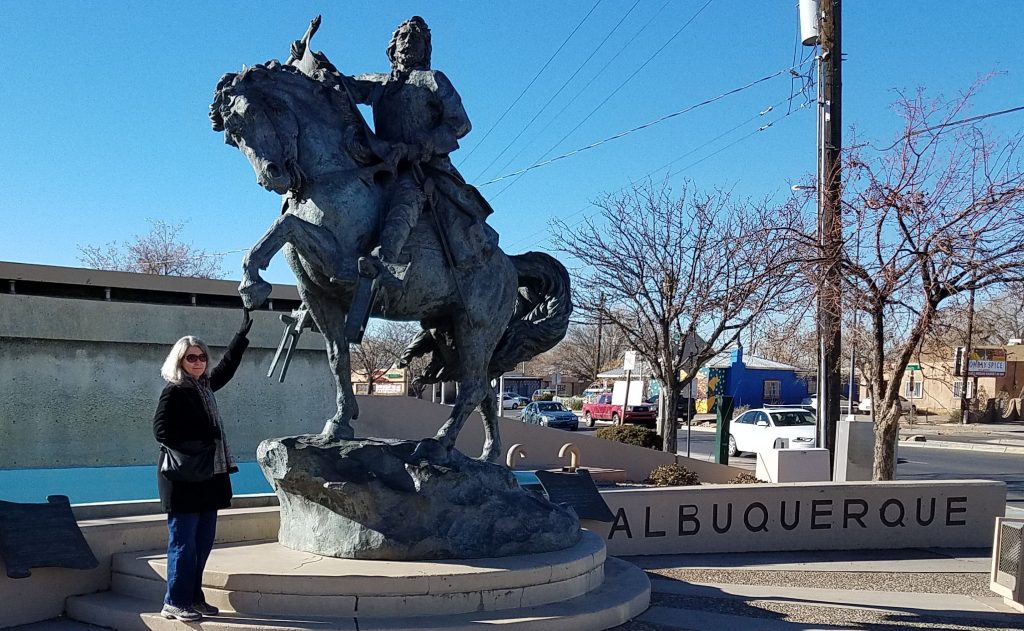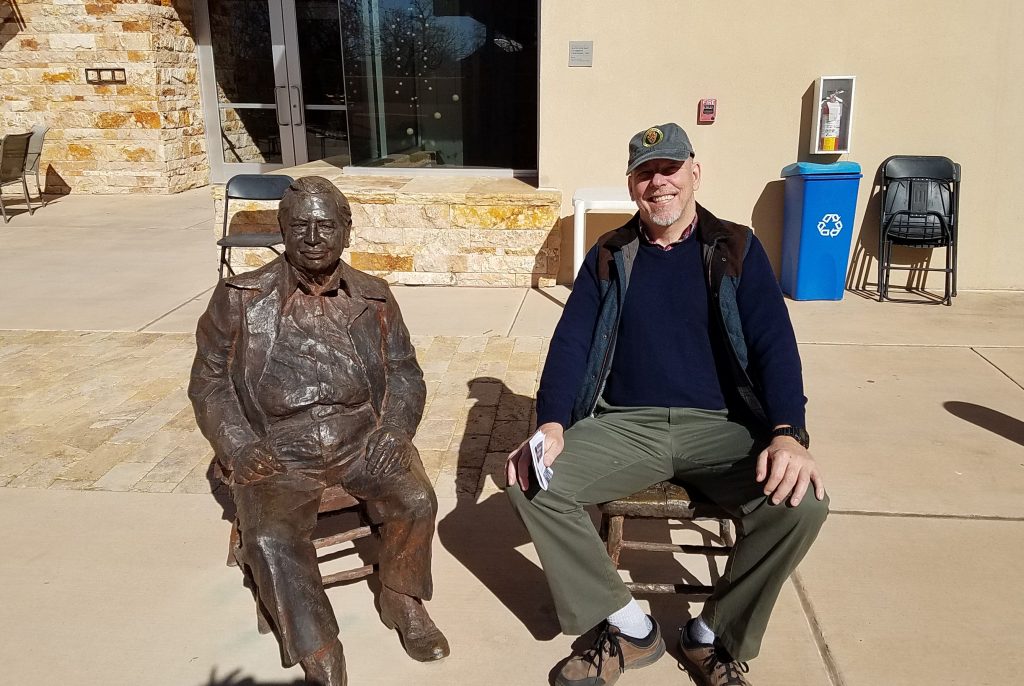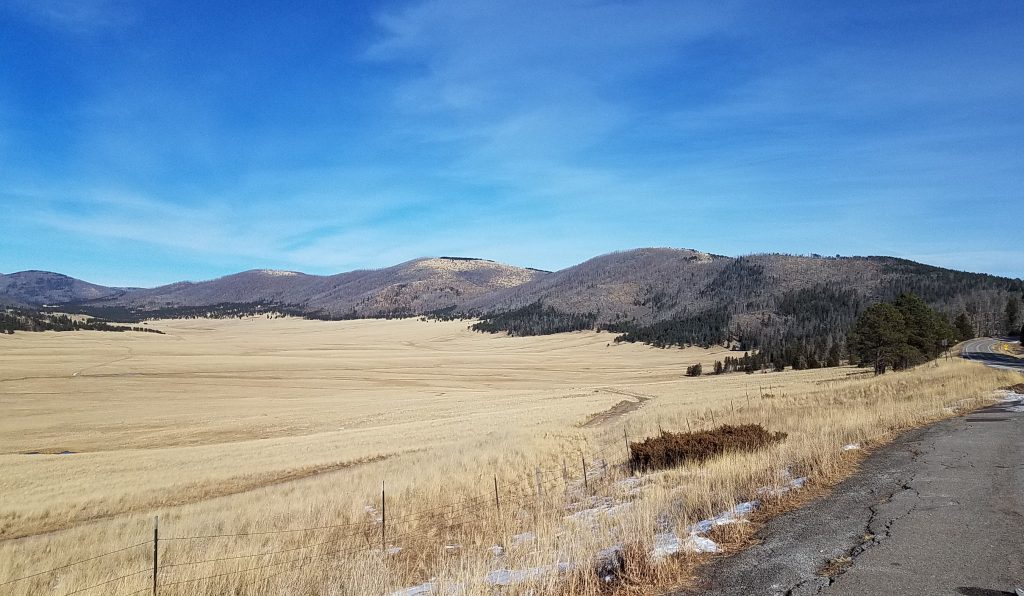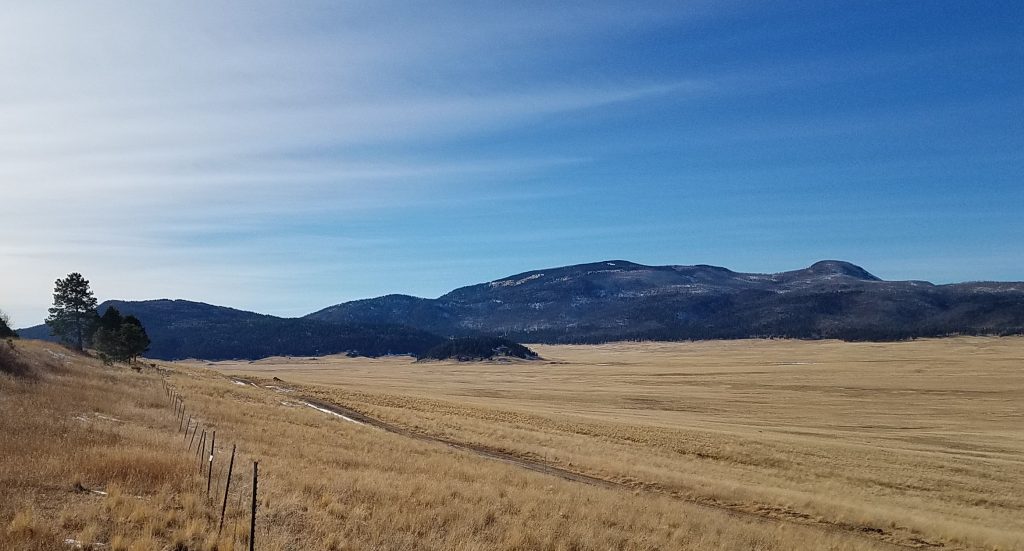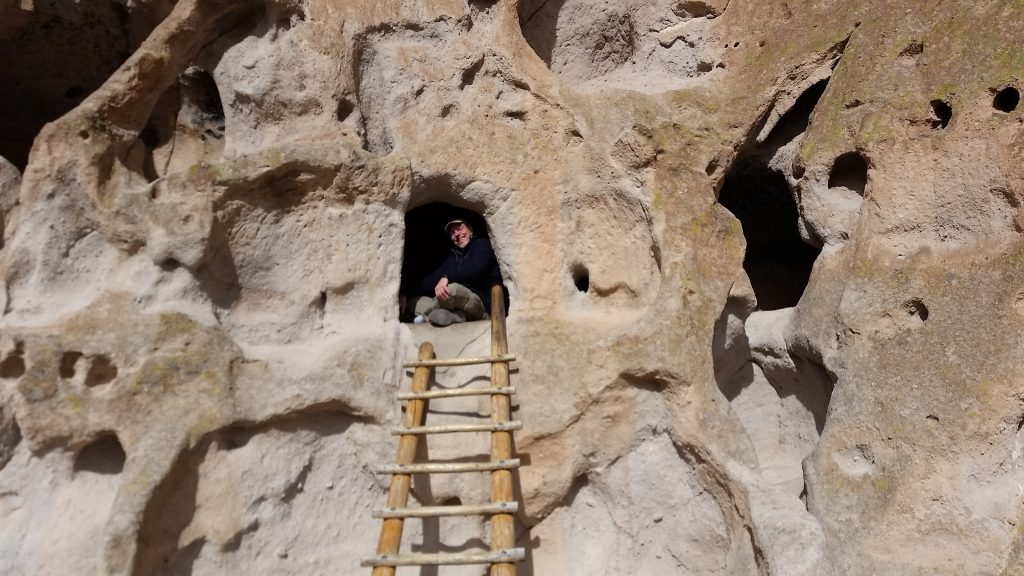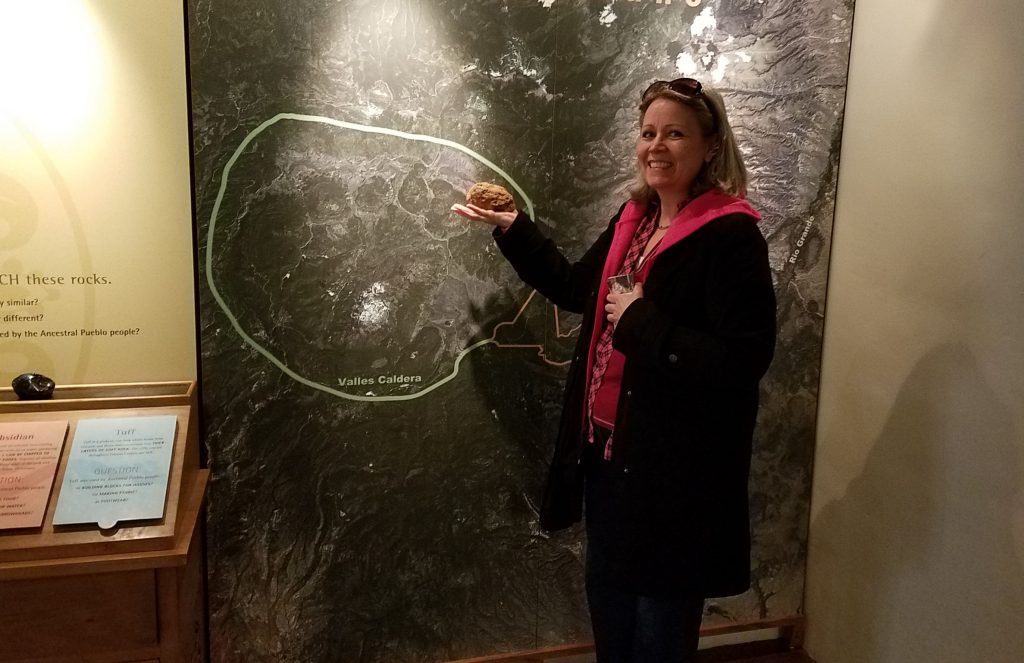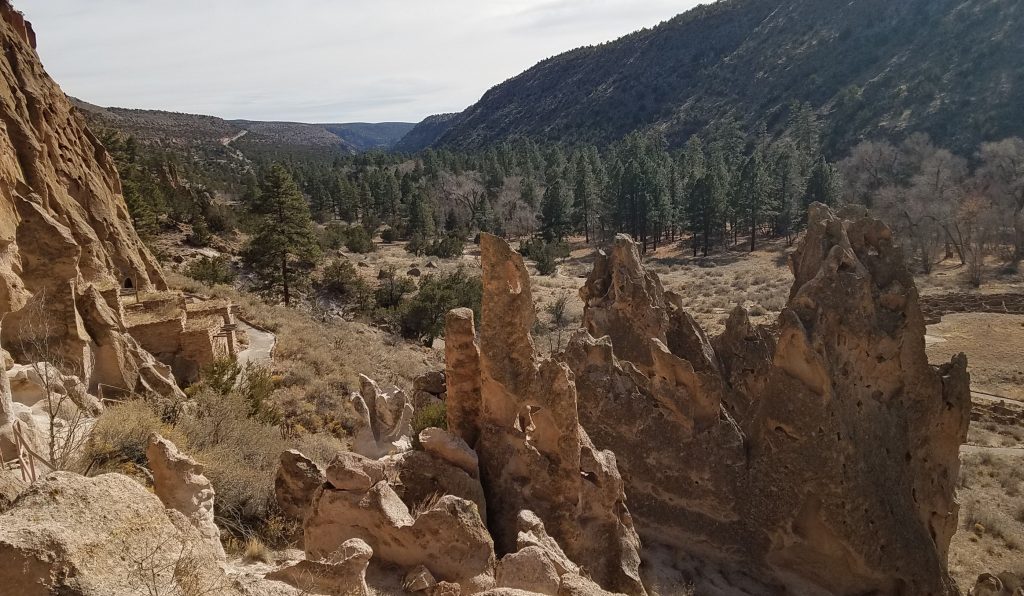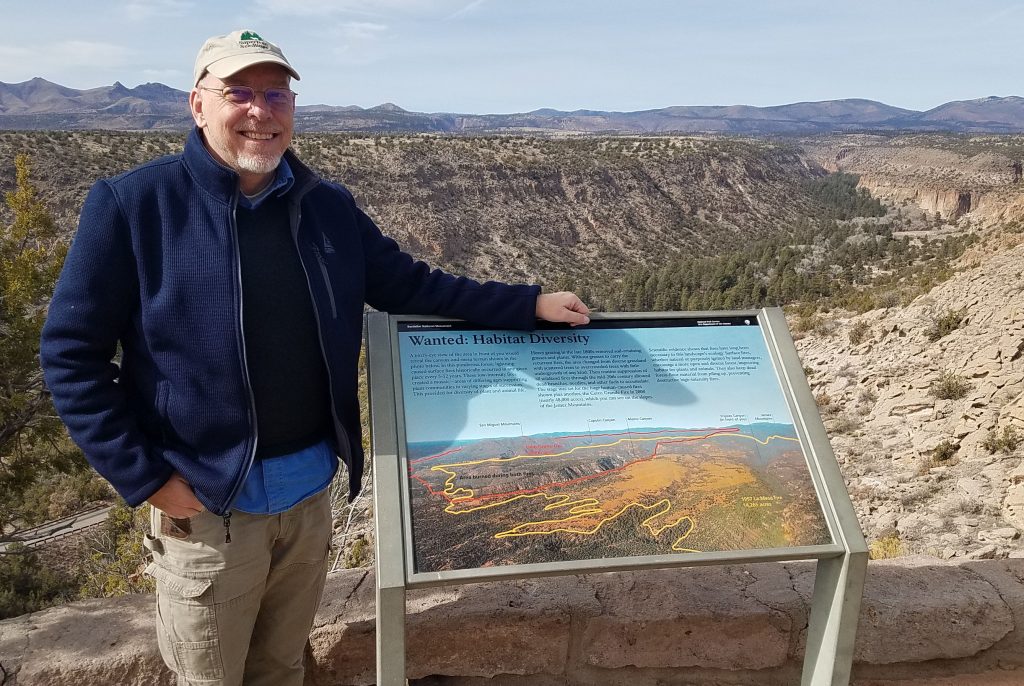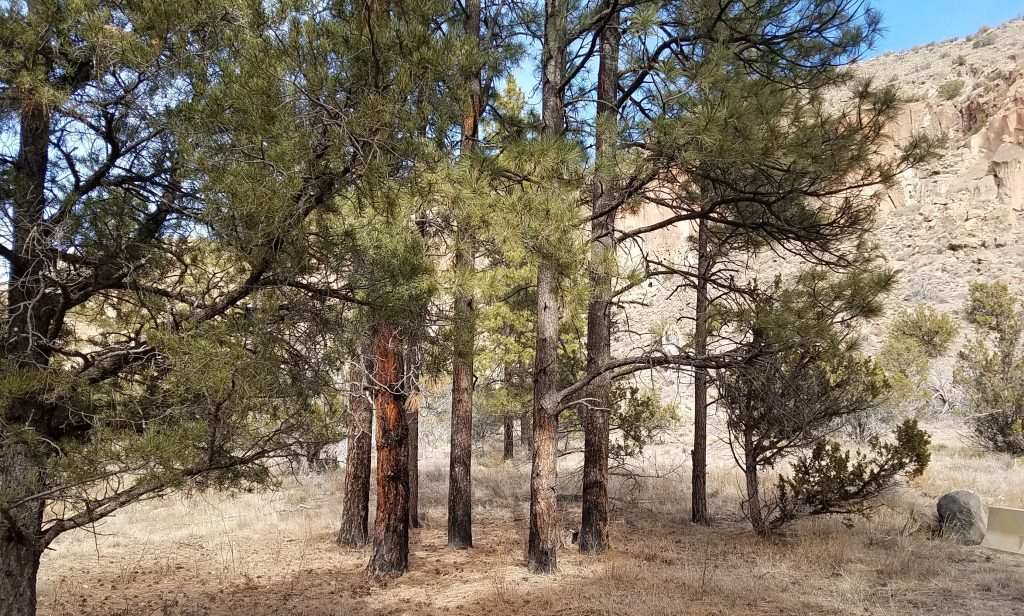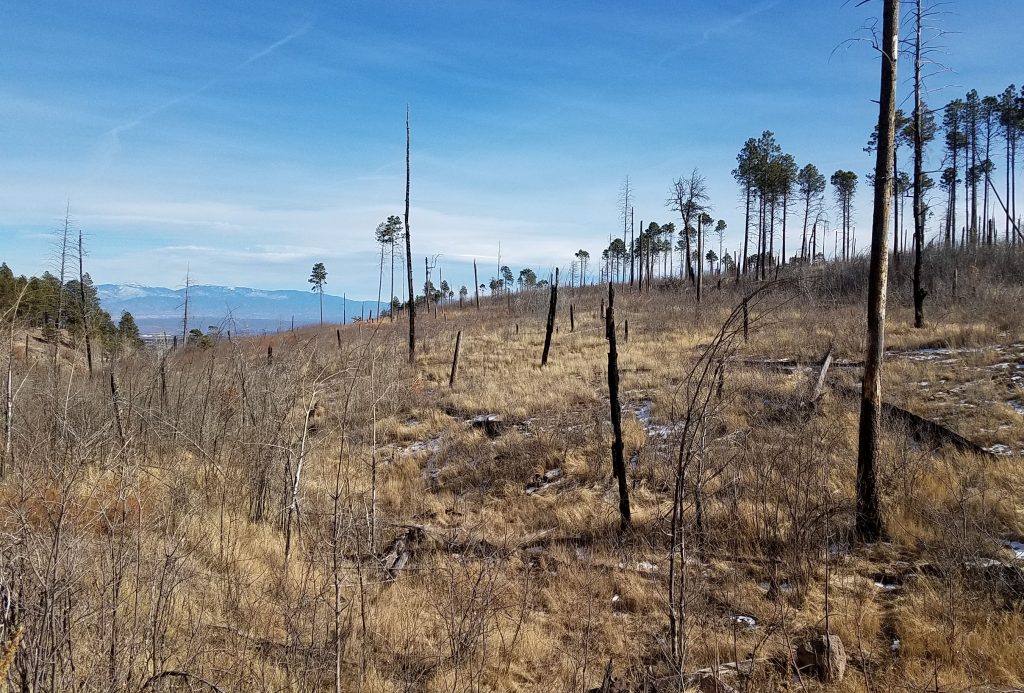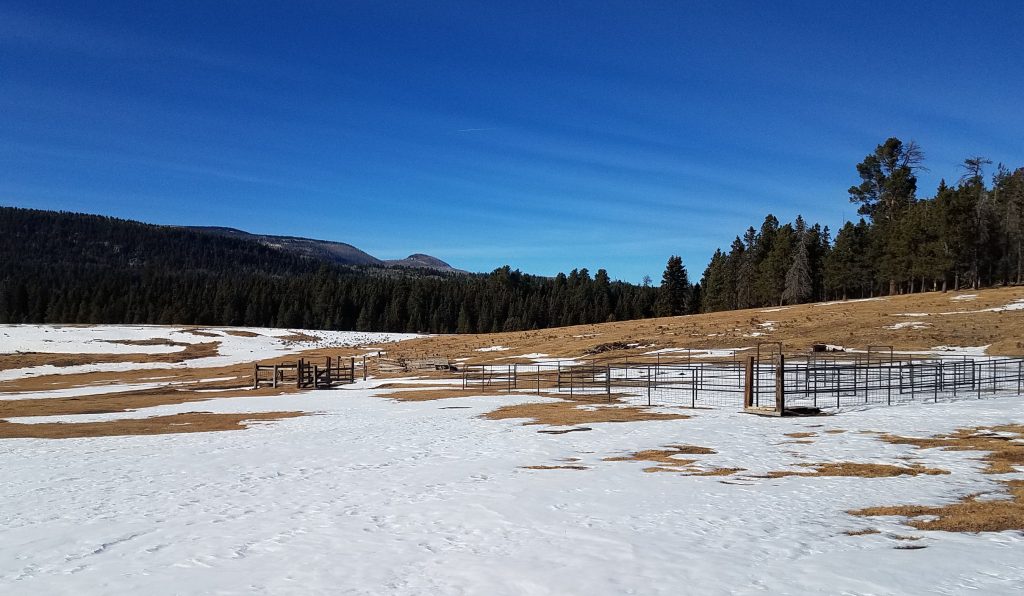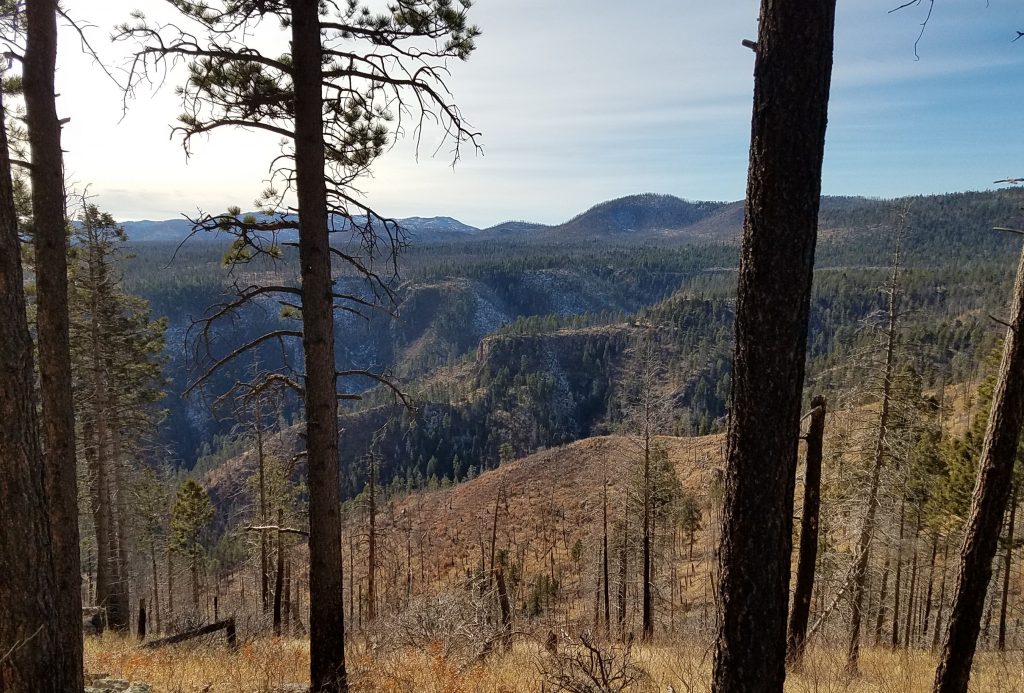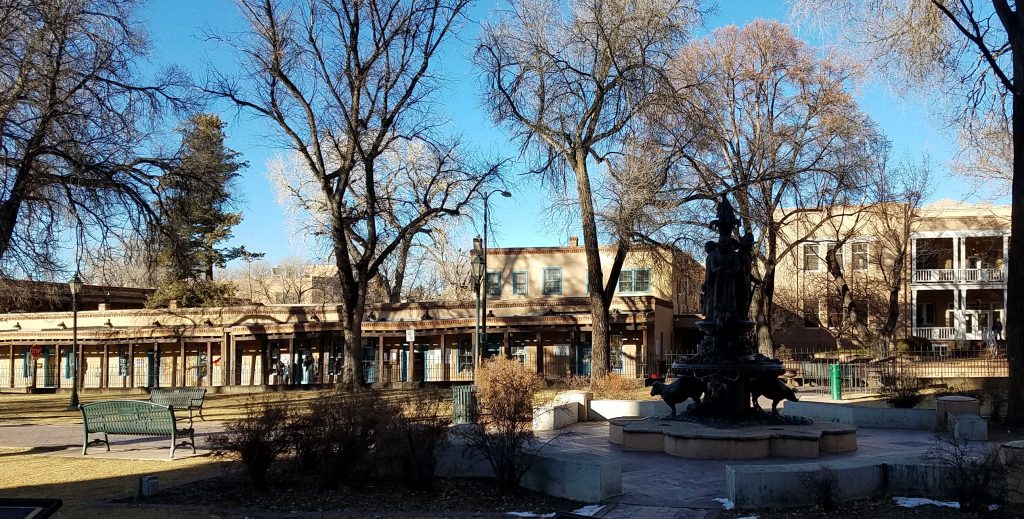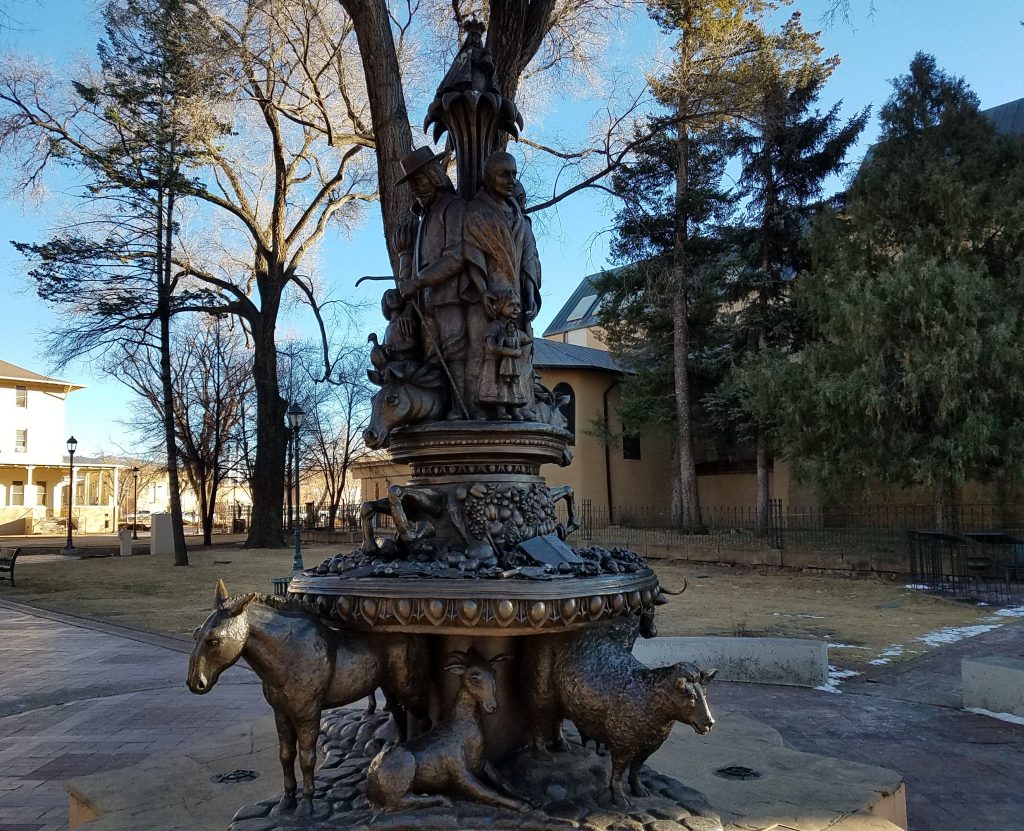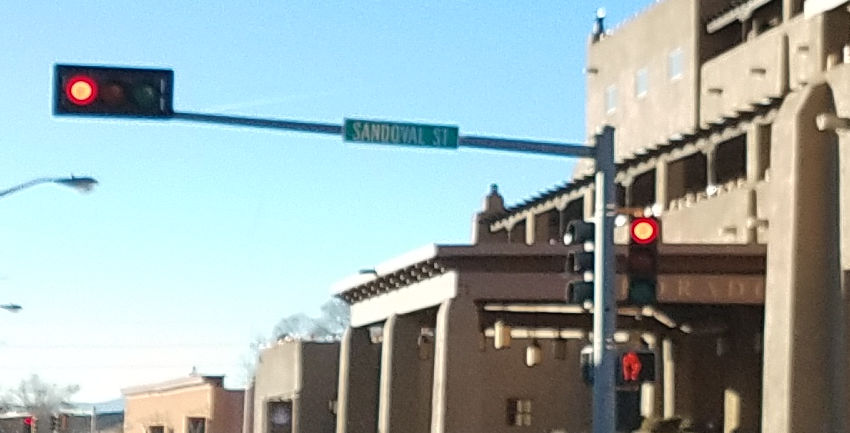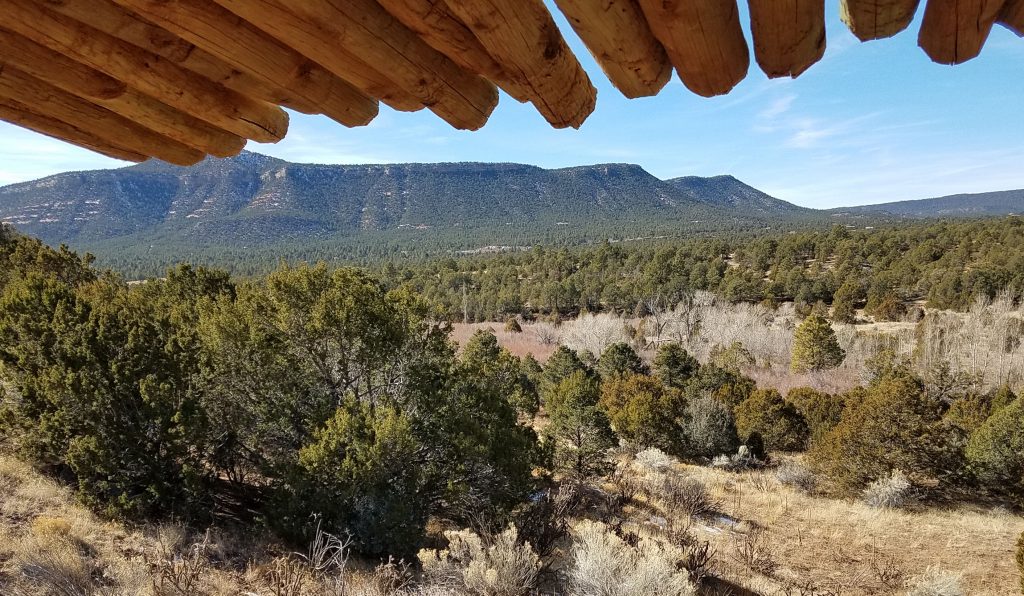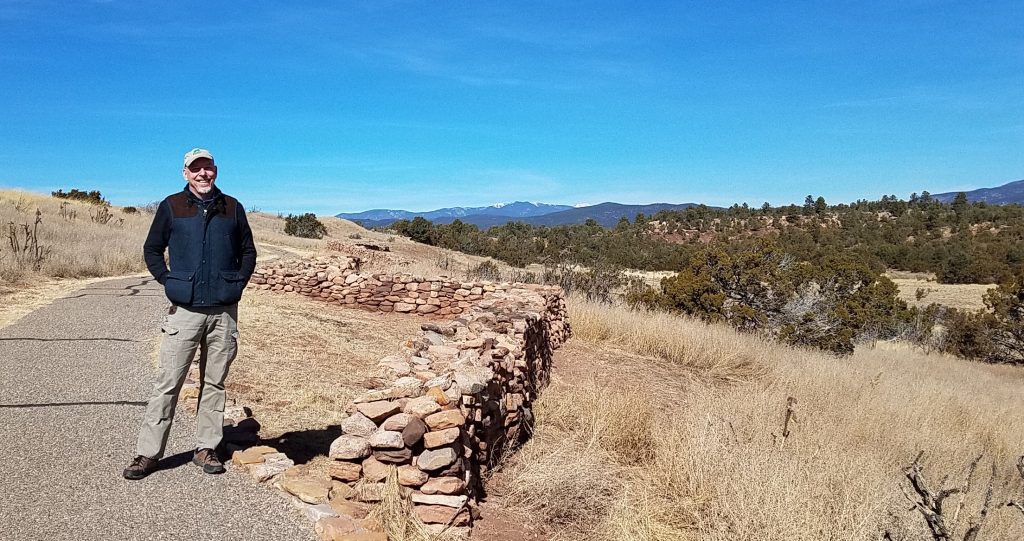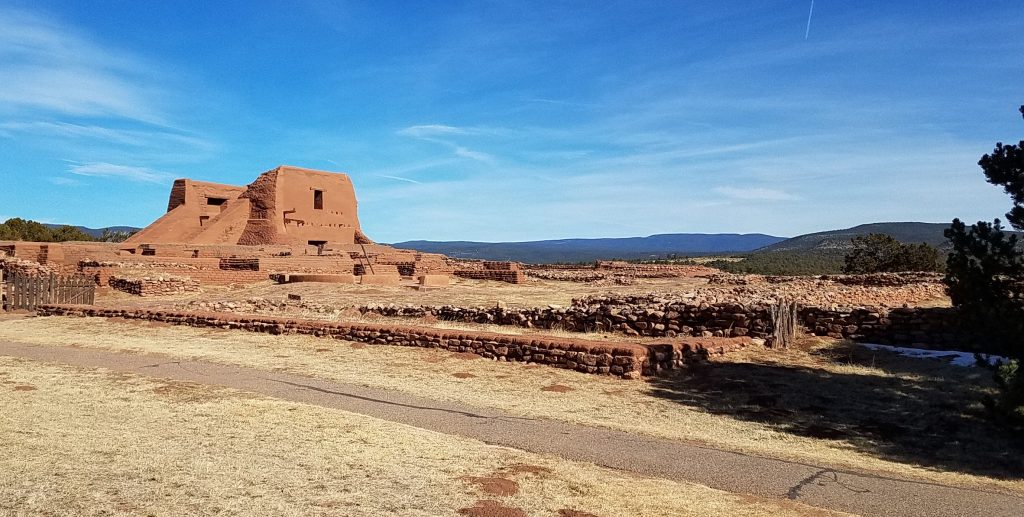Joshua Tree National Park protects a unique environment where two environments meet. The Joshua Trees grow in the high desert of the Mojave. As you go downhill, you get into the Colorado Desert biome. The Colorado is a subset of the the Sonora Desert, but it lacks the iconic saguaro cactus, which is kind of a big deal, IMO.
The dominant thing here is creosote bush, also known as chaparral. This bush does not play fair. It emits a kind of toxin that inhibits the growth of other places, resulting in widely spaced bushes, each able to get enough water. They look like somebody has planted them in regular rows.
Another common plant in the Sonoran Desert is the cholla cactus. My cousin Carl Hankwitz warned me about them. If you get near, they stick into you. They call it the jumping bush because it seems to jump on you and hold you down.
Joshua Tree was going to be shut down because of the shutdown, but they opened today with volunteers and money from entrance fees paid voluntarily. There was some vandalism a couple days ago. I have trouble understanding the malice that goes into destroying nature. The logic of keeping it open was that visitors would help avoid vandalism by at least providing witnesses to disapprove.
We first visited the park in 2010. I was at Camp Pendleton for a Marine training exercise and Chrissy came after. I rented a car, but it was a piece of crap, so I took it back before CJ arrived. They had a convertible, so we traded up. Since that time, we have really enjoyed convertibles. I don’t think it is worth it to own, but renting once a year it is nice to have. It was not really warm enough to drive with the top down, but we did it anyway, using the heater to make it okay. You really see a lot more.
Joshua trees form a kind of savanna. The little ones look like longleaf pine in the bottle brush phase, as you can see by the second photo. Photo #3 is just a nice sunrise photo. #4 shows me close the the cholla cactus. I did not touch. Last is ocotillo. It is a deciduous tree, but not dependent on season. Instead, it is rain dependent. After it rains, the leaves come out. This can happen five times a year.
A very eventful day. We went to Joshua Tree National Park and visited Palm Springs. I will write about such things soon, but let me start with the usual beer pictures.
We went to Babe’s Bar-B-Que & Brewhouse for pulled pork and beer.
I don’t think pigs & beer get the credit they deserve for the advance of civilization. Recent scholarship indicates that beer came before bread in the use of grain. It is an excellent way to preserve the otherwise perishable product and provide carbohydrates into the future. Pigs are one of the world’s most efficient protein machines, and they recycle superbly. They grow fast and they can subsist on garbage that would otherwise just be wasted. Peasants could feed the pigs the slop they no longer wanted to eat and shortly harvest a bonanza of pork products.
I believe it is true that w/o pigs and beer, Western Civilization never would have broken free from the cycle of subsistence.
So let’s toast the wonderful pig with a flight of beer.
We had two sets of beer today. The first group is at Babe’s. The other two are from lunch at an Italian place in Palm Desert. I am not leaning sideways because I am drunk, but rather because Chrissy need me to lean out of the light.

